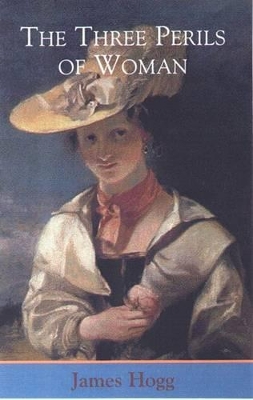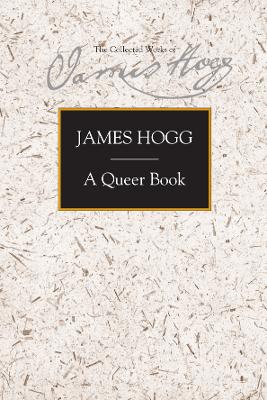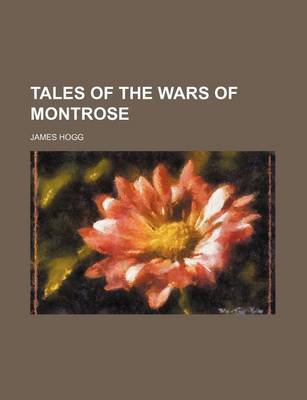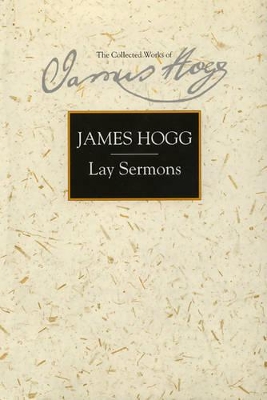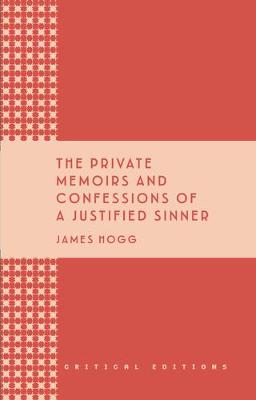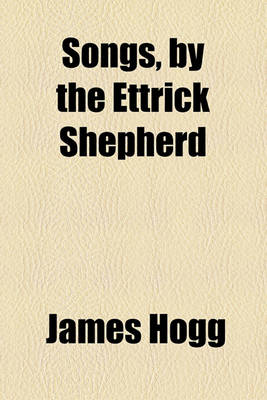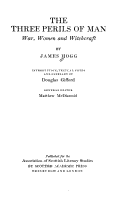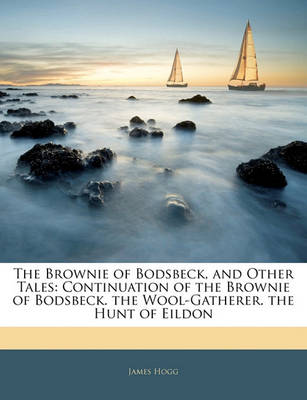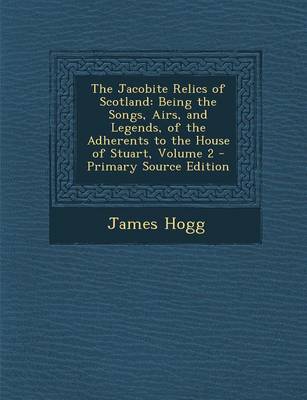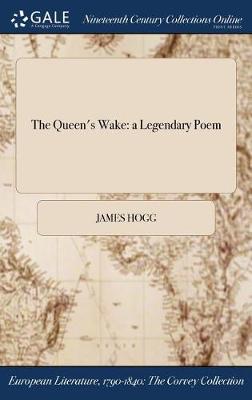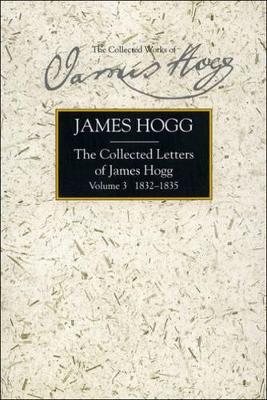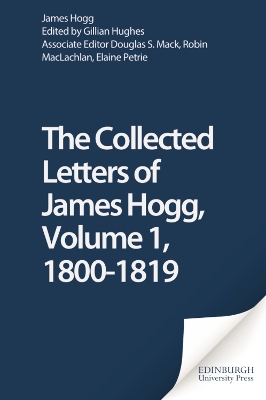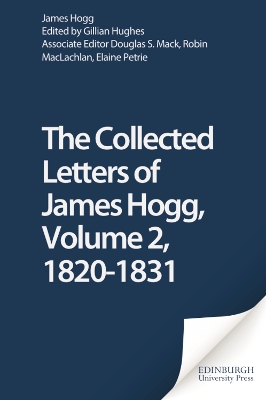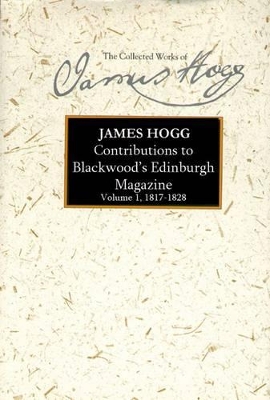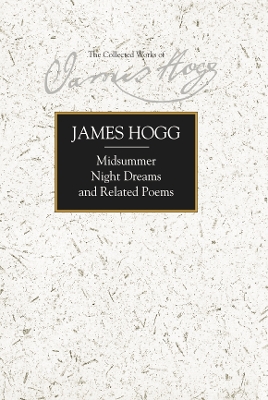The Collected Works of James Hogg
5 primary works • 30 total works
Book 1
Book 2
'Commentators once dismissed Perils of Woman as a bad book because it trampled on the flowerbeds of early-nineteenth-century decorum; they now acclaim it a masterpiece for the very same reason, reading subversive craft in the place of oafishness.' Ian Duncan, Studies in Hogg and his World 'Both stories [of The Three Perils of Woman] are generically diverse, self-consciously impure. Hogg described them as 'domestic tales', apparently soliciting a female readership whose delicacy he then assaults with speculations about promiscuity and prostitution, and with prayers so chattily informal that reviewers found them blasphemous. Both stories modulate suddenly from comedy to tragedy, though one - but which?- struggles through to what may be a happy ending. [...] What matters about The Three Perils of Woman is not the conclusions it has to offer about the issues it raises, but the fact that these are addressed with such painful urgency.They have become urgent once again, and will continue to be so; and if the book provides an especially useful way of thinking about them, it's because it offers an 'unflinching' account of a violent national past while acknowledging the temptation, the impulse, even the need, to flinch.
' John Barrell, London Review of Books.
Book 3
Book 4
Book 5
The Private Memoirs, first published in 1824, is an early psychological novel, in which the phenomena of the split personality and the obsessed character are described with extraordinary insight. Set in the gloomy world of 18th-century Scottish Calvinism, the novel is a story of moral fanaticism, of a mind darkened by and overpowering conviction of its own righteousness. The story concerns two brothers: one murders the other and is in turn destroyed - or destroys himself. It is a book, Andre Gide wrote, "fitted to arouse passionate interest both in those who are attracted by religious and moral questions, and for quite other reasons, in psychologists and artists, and above all in surrealists who are so particularly drawn by the demoniac in every shape."
The book contains vivid pictures of the manners and morals of a chiaroscuro society remarkably similar in some ways to Dostoevsky's, but seen from the outside by a man whose rebellious, independent disposition enabled him to survive in defiance of his own Establishment. It draws on some of the traditions and techniques of the "Gothic" school, but more importantly, it is an early exercise in narrative technique - in its deliberate manipulation of point-of-view - and in psychological realism.
The text of this edition has been carefully collated with the first edition. It contains an introduction by Robert M. Adams, an afterword by Gide, and a glossary of Scottish words and phrases prepared by Mr. Adams.
The adventures of its characters, told with the author's characteristically bold simplicity, are many, mad, and breathtakingly fast. Ranging from Galloway to Northumberland, the main focus of the book is to be found in the Scottish Borders. Hogg knew and loved the Borders well, and the book is full of their oral tradition and local lore. In his attempt to synthesise this material with history, romance and the high literary ideals of his time, Hogg's nearest modern parallels would be a combination of Tolkien and Iain Banks.
Hogg's fusion of traditional folklore and innovative style was viewed as an anachronism by his contemporaries, and it is only now that his work is recognised s one of the most original and masterly in the Scottish canon.
The Introduction (besides giving a full history of this complex, changing work) places it firmly within the eighteenth-century antiquarian projects of ballad-collecting and the intellectual currents of Romanticism, in particular the literary vogue for the ballad shown in works such as Lyrical Ballads (1798) by Wordsworth and Coleridge. Available in Paperback: The Private Memoirs and Confessions of a Justified Sinner The Shepherd's Calendar Tales of the Wars of Montrose The Three Perils of Woman Winter Evening Tales Anecdotes of Scott The Queen's Wake Altrive Tales Also Available in Hardback: A Queer Book The Shepherd's Calendar The Three Perils of Woman Tales of the Wars of Montrose Lay Sermons Queen Hynde Anecdotes of Scott The Spy The Private Memoirs and Confessions of a Justified Sinner The Jacobite Relics of Scotland (First Series) The Jacobite Relics of Scotland (Second Series) Winter Evening Tales The Queen's Wake Altrive Tales The Collected Letters of James Hogg, Volume 1, 1800-1819
The introduction to volume one includes the crucial issue of Hogg's relationship to the Jacobite song tradition, and the place of the Relics within Hogg's career and personal context, facilitating further interpretations of Hogg's range of creative strategies. Considerable annotation accurately communicates the context of the songs and Hogg's relationship to the textuality of Jacobite culture. The introduction to volume two deals with the genesis of the text and Hogg's relationship with the Highland Society. This volume will be available from November 2002.
However Hogg's heroine, Ila Moore, is not a chaste aristocrat but a girl of low social standing who is made pregnant by the wandering King. Ila's inherent resourcefulness and strength of character suggest that a peasant girl pregnant out of wedlock can be a heroine fully worthy of respect, and Mador (rejected as shocking and ridiculous by its original readership), now re-emerges as a flowing and immensely readable narrative that eloquently challenges the deeply-ingrained class and gender prejudices of Hogg's society.
Over the next six years Hogg was encouraged by major players in the Edinburgh book trade to make substantial revisions, to make the poem even more attractive and saleable. The fifth edition (1819) is an enhanced and carefully polished version from the now established and respected poet. It is markedly different from the edgy, powerful and unsettling first version of The Queen's Wake, which was the work of an impecunious and marginalised outsider. Thus the poem exists in significantly different authorial versions, each reflecting Hogg's circumstances at the time. In recent years a consensus has emerged that in cases of this kind the modern reader is best served by having access to editions of both versions. The Stirling/South Carolina Research Edition of The Queen's Wake therefore presents both the first and fifth edition of the poem.
Key Features: * The publication of one of the landmarks of British Romantic poetry * At time of publication the poem's success placed Hogg alongside Burns and Scott as one of the leading writers of the period * Presents both the first and fifth editions of the poem to allow the reader to compare the two * A careful editorial introduction places the poem in its historical context
This edition of Hogg's Letters has its roots in the late 1970s and 1980s, when the four founder members of the James Hogg Society (Gillian Hughes, Douglas Mack, Robin MacLachlan, and Elaine Petrie) began work on tracing and transcribing Hogg's surviving letters. The major tasks of completing this work and preparing a full-scale edition of Hogg's Letters were subsequently passed to Gillian Hughes, who is now bringing this important research project to fruition. Key Features: * The first ever edition of Hogg's letters to be published * Includes many letters never previously published * Features Hogg's correspondence with figures such as Sir Walter Scott, Lord Byron and Sir Robert Peel
This new edition, thoughtfully introduced, extensively annotated and featuring a reading list and Hogg chronology, presents Altrive Tales as a major achievement by one of Scotland's finest storytellers.

